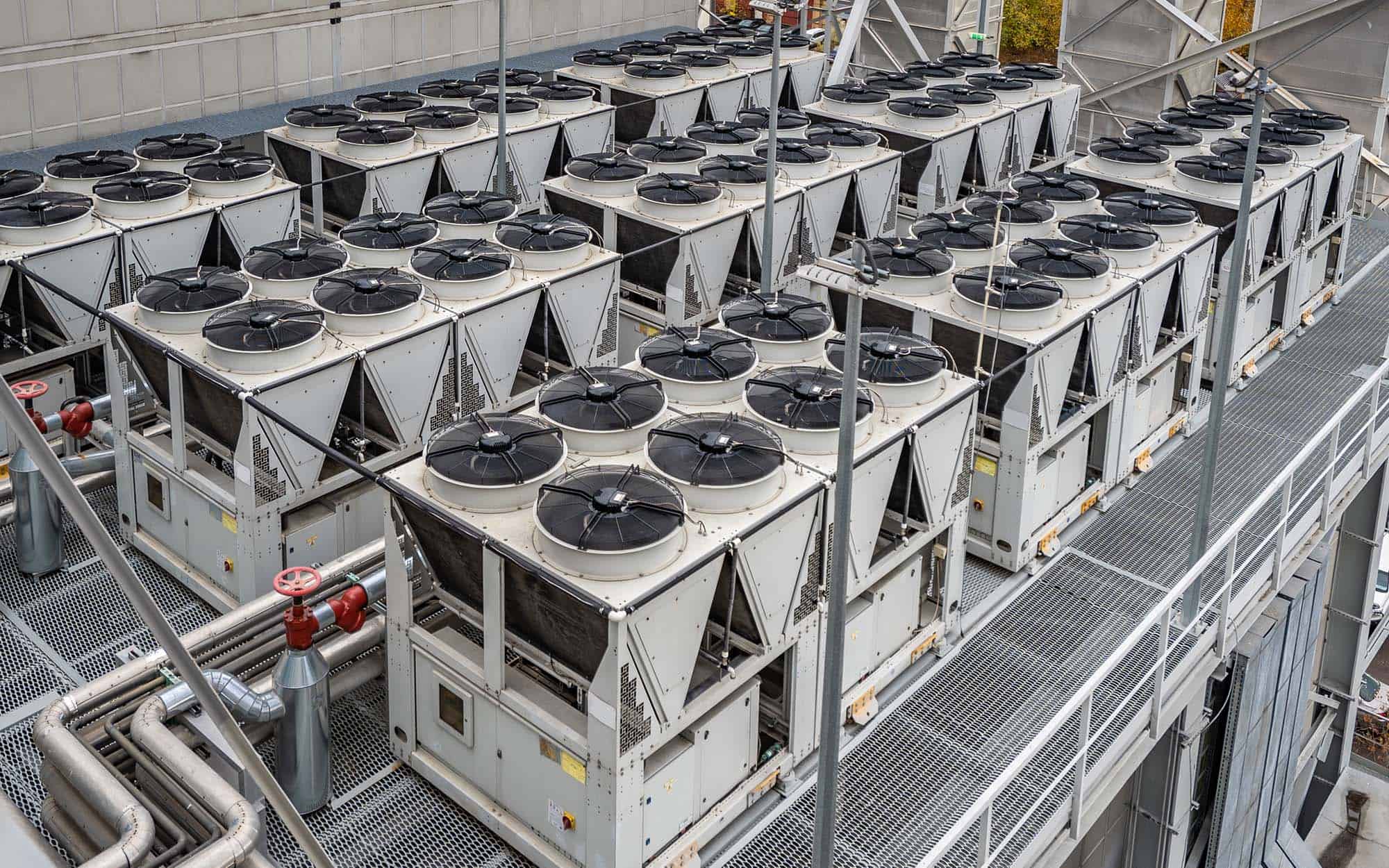
Saving money is crucial in today’s uncertain times. But it can seem impossible when faced with overwhelming expenses. Even though inflation shows signs of slowing, prices remain at a nearly all-time high. Interest rates continue to rise, and even gas prices are slowly creeping towards four dollars a gallon. As a result, millions of Americans are looking for answers. However, there are still ways to save money, no matter how small the amount is. Sometimes the answer to saving money can be something as simple as running an HVAC system in the most efficient way possible.
This article will explore how using a good commercial chiller in an HVAC system can save money during the summer, particularly for commercial buildings that spend thousands of dollars a year keeping a building at a comfortable temperature.
What Is a Commercial Chiller System?
The HVAC industry has evolved significantly over time, with new technologies emerging almost every year. One of these improvements is in the chiller efficiency of the heating and cooling systems.
Commercial chillers are one of the most energy-intensive components of HVAC systems. As a result, optimizing chiller efficiency is critical to reducing energy consumption, saving money, and reducing carbon emissions. This article will provide various tips and strategies you can use to achieve optimal chiller efficiency in 2023.
Be Sure to Conduct Regular Maintenance and Chiller Repair
Just like any other equipment, commercial chillers require regular checks and servicing to ensure efficient operations. Not getting them checked can lead to more significant issues down the road.
Conducting thorough maintenance can help clean and repair worn-out parts, remove pollutants, and check for leaks or damages that could cause energy waste. Some of the essential maintenance activities you should perform include:
- Cleaning condenser coils: Condenser coils help transfer heat from the refrigeration cycle. Dirty or fouled coils can reduce a commercial chiller’s efficiency by slowing heat transfer. Cleaning the coils every six months helps ensure the chiller works efficiently.
- Monitoring refrigerant levels: Refrigerants are essential for chilling operations. Low refrigerant levels can cause the chiller to overwork, consume more energy, and have lower efficiency. It’s necessary to monitor refrigerant levels and top them off if needed.
- Checking for leaks: Damaged pipelines or faulty connections can cause refrigerant leaks, reducing efficiency and increasing energy consumption. Aside from this, any leak can lead to other issues that can spread to other parts of the system.
If you live in an area with cold winters and hot summers, have these elements looked at before spring and during fall before the temperature changes to extremely cold or hot.
Install Variable Frequency Drives (VFDs)
Variable frequency drives (VFDs) are a technology used for optimizing chiller efficiency. These devices enable chillers to run at different speeds instead of a single speed, helping to save energy. VFDs control the pump or fan motors by regulating the compressor speed, valve openings, and refrigerant flow rates.
A VFD can help the chiller adjust its cooling output in response to different load sizes, reducing energy consumption and operating costs. For a commercial building, this can be a huge money saver.
Upgrade the Chiller Controls
Digital control systems provide real-time monitoring of commercial chiller performance, enabling you to find and respond to inefficiencies quickly. Some of the features that digital control systems offer include the following:
- Demand side management: Some digital control systems can track cooling demand throughout the building and adjust chiller performance accordingly, ensuring optimized performance.
- Fault detection and diagnostics: Digital control systems can detect faults, preventing costly breakdowns and energy waste.
- Remote control and monitoring: Digital control systems enable remote control and monitoring of the chiller, allowing for better efficiency management through automation and scheduling.
Older commercial chillers are often less energy-efficient than modern, more energy-efficient models. Replacing old, inefficient chillers with newer, energy-efficient ones can help you save on energy costs long-term. Modern commercial chillers are designed with energy-efficient features that help to reduce energy consumption and operating costs. Some of the energy-efficient features that modern chillers offer include:
- High Energy Efficiency Ratio (EER). The higher the rating, the more efficient. A sound EER2 system can decrease costs even with a high outdoor temperature.
- Variable speed drives. This allows for a change in the speed and energy used to run.
- An improved compressor design. As with any modern compressor advancement, the newer models are more efficient and save money.
In addition to energy-efficient designs, chillers that use a natural refrigerant, such as R290 or R717, offer significant energy savings and have a lower environmental impact.
Implement Operational Efficiency Measures
Another strategy for getting optimal chiller efficiency is implementing operational efficiency measures. These are practices to improve chiller performance, reduce energy consumption, and optimize cooling operations.
Some of the operational efficiency measures that can help enhance chiller performance include:
- Use variable speed drives to reduce the energy required to operate different chillers, compressors, and motors.
- Implement automated controls that track cooling demand throughout the building and adjust chiller performance accordingly.
- Use temperature setbacks to reduce energy consumption during off-peak periods.
- Implement a preventive maintenance program that includes regular inspections, cleanings, and replacements of worn-out parts.
React Industries: A Leading Provider of Quality and Effective Commercial Chillers
Optimizing chiller efficiency is critical to reducing energy consumption, operating costs, and carbon emissions. Regular maintenance is essential to ensure your chiller operates efficiently. Installing VFDs can help the chiller adjust its cooling output in response to load variations. Upgrading your chiller controls can significantly improve chiller efficiency while using energy-efficient chillers.
Incorporating the above tips and strategies in your commercial chiller maintenance program is vital to achieving optimal efficiency. By adopting these strategies, you can achieve long-term energy savings, reduce operating costs and carbon emissions, and improve your building’s overall energy performance. Implementing operational efficiency measures can also help achieve optimal chiller efficiency.